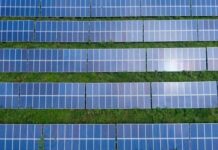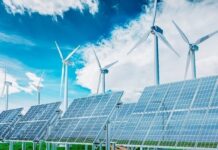The wholesale power prices coming under pressure due to surging solar output is not a new concept within the power markets, but it also looks all set to become a potentially divisive issue throughout Europe as rampant expansions within the solar output upend market pricing patterns.
Power generated by way of solar panels happens to be the cheapest source of electricity across numerous regions and tends to throttle down the price of wholesale power across peak solar output periods, thereby eroding margins when it comes to power producers.
The phenomenon, which is called the renewables cannibalization effect, happens to be particularly acute across Europe’s electricity system, which goes on to prioritize clean electricity supplies as well as where politicians have gone on to set ambitious decarbonization goals designed to decrease the reliance on imported fossil fuels.
Renewables-driven price disruptions have also gone on to gain widespread attention across the United States because of the creation of a so-called Duck Curve in Californian power prices, wherein massive volumes of solar output across the middle of the day flood the market just like the overall power demand happens to be at a lull.
In order to accommodate that surplus power load, power prices kind of plunge in a way that happens to be much the same as the shape of a duck’s belly, right before rising again later as the solar output goes on to decline.
It is well to be noted that Europe’s integrated power markets must go on to brace for similar periods when it comes to price disruption, following fast expansions in terms of solar capacity throughout the continent.
These disruptions happen to have the potential to temporarily undermine the economy when it comes to power production across all sources, and may hence go on to deter investments in more regional generation capacity at a crucial time.
For policymakers who go on to support a kind of fast transition of energy systems away from fossil fuels while at the same time also ensuring continued power sector stability, bouts of probably loss-making power prices because of surplus solar output may indeed be kind of unnerving.
However, the authorities can take heart from the scenario that energy consumers are already witnessing the benefits when it comes to greater renewables output in the form of lower prices.
And in the long term, consumers are also going to be better protected from future fuel price shocks as and when the buildout of home-grown renewable power capacity gets completed.
However, over the nearer term, policymakers, energy consumers, and power producers, must go on to prepare for more swings in power costs as the generation mix in Europe goes ahead and evolves from primarily fossil fuel-based to being more well-run on clean fuels.
Fast track
It is well to be noted that after Asia, Europe has happened to be the fastest-growing market when it comes to new solar capacity for the past decade, adding 172 gigawatts- GW of capacity between 2012 and 2022, as per the energy think tank Ember.
That compares to almost 600 GW of capacity additions throughout Asia, and nearly 110 GW of capacity growth throughout North America in the same period.
Capacity data when it comes to 2023 has yet to be confirmed; however, renewable industry analysts, along with other consultants, estimate that Europe will indeed have set a new installation record again in 2023.
The fact is that the rapid growth pace has enabled solar power to grab a rising share of Europe’s total electricity generation mix that has gone on to double from around 5% during the summer of 2019 to just below 11% last 2023 summer, and that too the highest of all regions.
In comparison, solar’s share in terms of electricity generation across Asia topped out below 7% 2023 summer, while across North America it peaked at nearly 6.37%, Ember data shows.
Capturing pricing impact
The impact of such a rapid climb in solar output has gone on to already distorted Europe’s power markets, and, as a matter of fact, resulted in utilities earning shrinking revenues from renewables.
As additional solar capacity has been purchased online in several countries, regional power prices went ahead and responded by trending broadly lower, specifically during high solar output periods.
Price forecasting models, as a matter of fact, have also had to be updated to account for the rising share of renewable power across the generation systems, with the so-called capture prices as well as the capture rates being made use of to measure the impact when it comes to renewable cannibalization.
The capture price happens to be a weighted average price during which a power generation asset goes on to produce electricity, and is expressed relative to the baseload contract price, which is paid to fossil fuel-based power producers.
The capture rate happens to be a measure of the capture price divided by the market price that is available for the power produced and is expressed as a percentage.
In the scenario of a natural gas plant that just produces power during peak demand periods, the typical capture rate can be 100%, since the plant can dispatch maximum volumes so as to fulfil demand needs at peak prices and then decrease or even halt output when demand as well as prices go on to dip.
In the case of renewable assets, the capture rate happens to be typically less than 100% and can be even lower for solar assets that just produce electricity when the sun shines and, at the same time, often hit peak output just when demand as well as prices may be near their lowest during a typical day.
Germany and Spain happen to feel the pain
Power price models across Germany and Spain clearly demonstrate the impact of dipping capture prices as well as rates because of expanding solar output.
Due in part to the rapidly rising electricity from solar farms, the wholesale power price coming from the solar assets in Germany was reduced to the lowest in almost four years in April 2024, as per pricing models compiled by LSEG.
In turn, lower solar-driven prices have gone on to drag the overall German wholesale price lower.
The capture rate in German solar assets has also witnessed quite a dip in April 2024, plunging to 50% of baseload power contracts.
It is worth noting that the capture rate happens to be even lower in Spain, where abundant sunshine results in a rise in solar output, which can often far exceed system demand needs that are spread all across the day.
The solar capture rates in Spain are anticipated to average nearly 85% for the rest of 2024 but dip steadily in the coming years to almost 60% by 2030 as well as 45% by 2035.
Power developers who are concerned about the profit impact of such capture rate erosion could go on to slow their development pace and hence potentially threaten the national or regional energy transition momentum.
However, if policymakers happen to keep a long-term view in mind of the perks coming from a fully developed renewable energy system, apt incentives for power developers can very well be created so as to make sure that the pace of the region’s energy transition gets maintained.











































